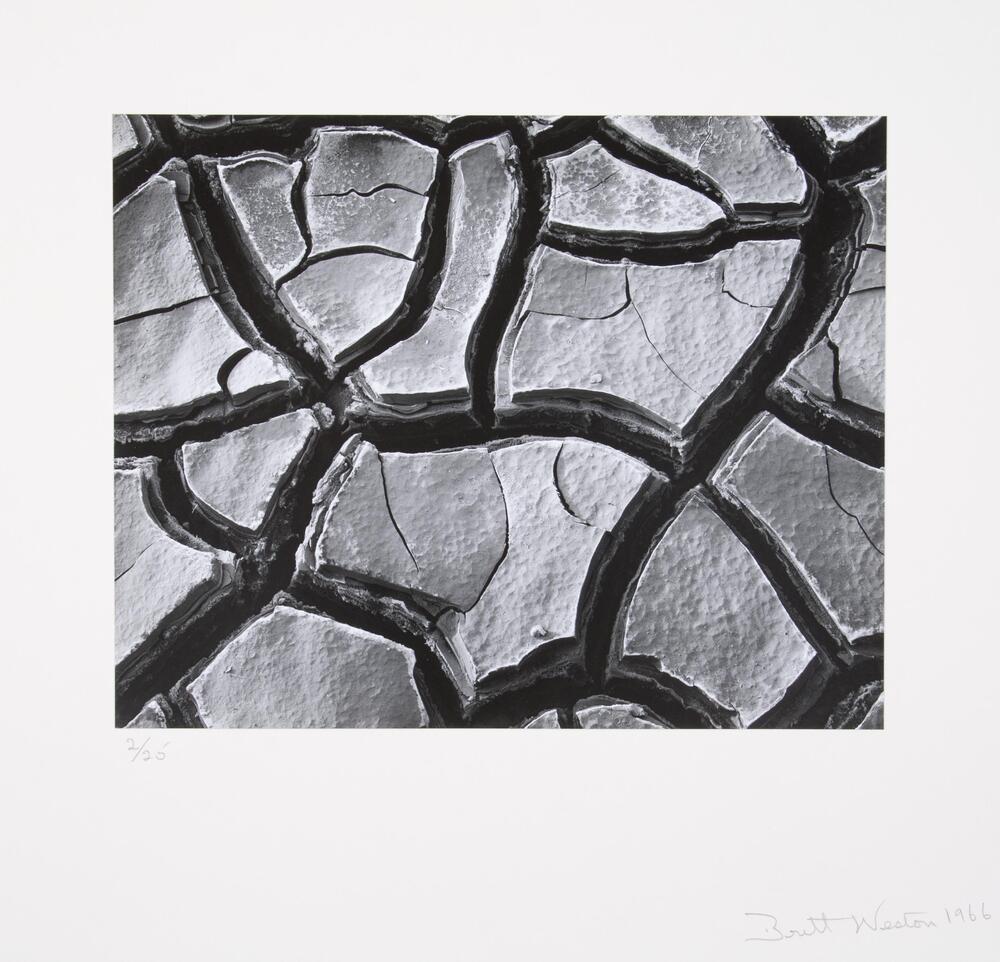Lesson Plan: Environmental Art
“Andy Goldsworthy: Mountain and Coast, Autumn Into Winter” UMMA Teacher Workshop, February 19 & 20, 2003
Objectives
Students will create temporal and seasonal work from their environment, based on the photographs of Andy Goldsworthy and Brett Weston. They will focus on combining and contrasting organic and geometric shapes.
National Core Standards
- Generate and conceptualize artistic ideas and work
- Interpret intent and meaning in artistic work
Grades
K-3
Time Required
Two class periods
Materials
- Access to the outdoors: a playground, a trail. Or bring natural materials into the classroom: pinecones, rocks, leaves,
- Digital cameras
Lesson
- Discuss vocabulary: organic shape and line, geometric shape, environment, repetition
- To prepare for teaching, discuss background on Andy Goldsworthy. Possibly watch Rivers and Tides, a documentary about Goldsworthy. YouTube has short trailers of the full 90-minute movie. https://www.youtube.com/watch?v=f7sZv4_0Fxg. The following was written by UMMA curator, Sean Ulmer:
Internationally renowned Scottish artist Andy Goldsworthy has spent the past two decades revealing nature’s secrets. Through the careful selection and arrangement of items readily found in nature, Goldsworthy creates installations in the natural environment that last from only a few moments to several years. The tools of his trade are his own two hands; his media are stones, sticks, leaves, sand, feathers, snow, ice, or whatever the natural environment offers him. Fixing his fragile compositions in place are thorns, water, ice, and gravity itself.
Some of Goldsworthy’s works also function on a more abstract level, much like an abstract painting or sculpture. A theme found in several of his pieces is a dark circular void or hole in the center of the composition. Whether created through the use of found sticks and twigs, carefully stacked and color-graded leaves, or white, black, and gray pebbles, these manmade circular forms seem out of place in the natural environment, yet they reference and mimic the cyclical character of nature with its endless rounds of birth, growth, death, and rebirth.
Another abstract form in Goldsworthy’s compositions is a curving and undulating line. While these animated and dynamic lines seem snakelike in their character, many other natural analogies come to mind, from the meandering of a river, to the trail cut by wild pigs through the undergrowth, to the curvilinear contour of an oak leaf.
Given the fleeting nature of most of his creations, Goldsworthy’s photography of his works is often the only artwork that we are witness to. Serving not only to document the work, the photographs capture both the temporary arrangement and a sense of the inherent soul of the piece. Accessible and poetic, Goldsworthy’s creations and the photographs of them inspire a rediscovery of the beauty, bounty, and diversity of the world in which we all coexist, both with each other and with nature itself.
- Brett Weston was an American photographer, the son of photographer Edward Weston. His photographs are typically close-up images of abstracted environmental elements: tree roots, sticks, grass, sand, or mud. He owned two houses in Hawaii and would walk between them, photographing the environment along the way. He said: “I have found in this environment, everything I could want to interpret about the world photographically.” (http://www.brettwestonarchive.com/brettweston)
- Discuss similarities and differences between Goldsworthy and Weston. Both photograph their environment. Both make the viewer (re)consider the subject and wonder how the effect was achieved. Goldsworthy noticeably arranges and alters his environment before photographing it, while Weston makes photographic choices (zooming in, removing distracting lines) to achieve his effect.
- Go outside with students. Encourage them to collect many individual items of one type of natural object (rocks, sticks, leaves, shells).
- Depending on time, allow students to arrange natural objects in the environment or bring them back to the classroom and arrange them there.
- Discuss the difference between organic and geometric shapes. Goldsworthy takes organic materials and arranges them in circles. Weston finds circles and rectangles in nature. How will your students arrange their materials? How will they photograph them – close up or within a larger context? How does this change our perspective on what is being photographed and our relationship to it? Compile digital photographs in a slideshow or video and show to students.
Rate this Resource
AVG: 0 | Ratings: 0
& Author Notes
Creative Commons by-nc-saLast Updated
June 6, 2019 2:36 a.m.Report
Reporting Policy


